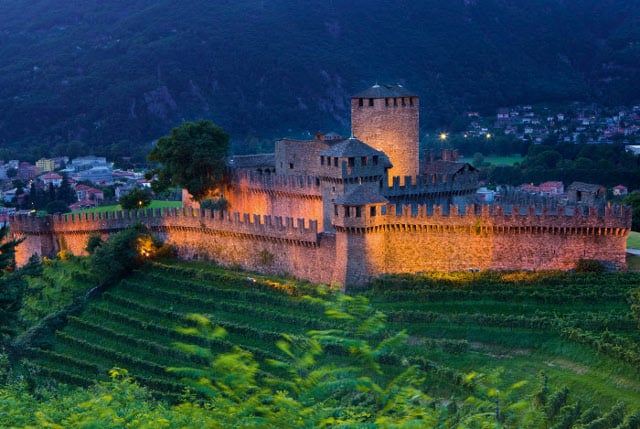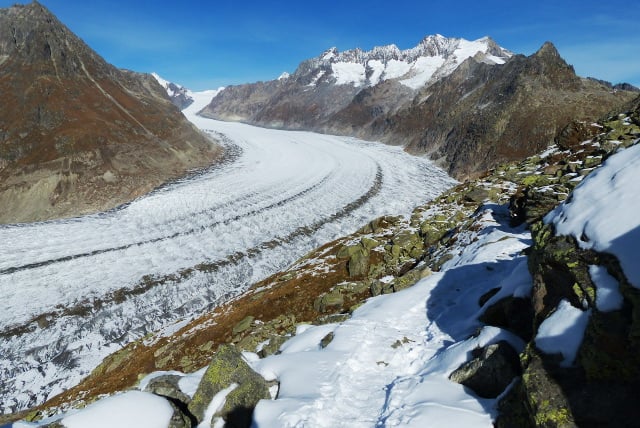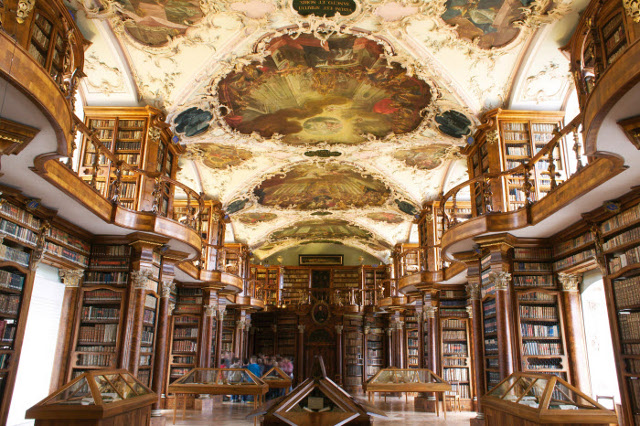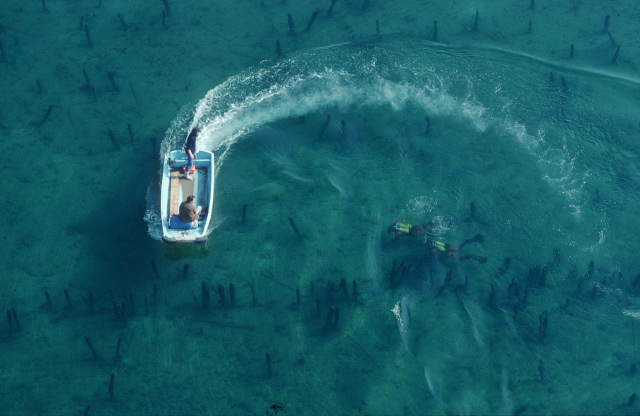IN PICS: Switzerland’s 11 stunning Unesco World Heritage sites

On the weekend of June 9th-11th Switzerland will hold its second annual World Heritage Days event, a great chance to explore the country’s 11 Unesco-protected sites.
During the three-day event each of these spectacular places will offer special events and activities to help visitors discover more about their history, including free guided tours, free entry to various museums and family-friendly activities.
For further details of events at each site, visit whes.ch. In the meantime, let’s just appreciate the beauty and awesomeness of these 11 incredible places.
1. Bern's Old Town. With parts dating from the 12th century, the medieval centre of Switzerland’s capital city comprises 6km of limestone buildings and covered walkways – the Lauben – as well as one-off gems such as the Zytglogge, a 16th century mechanical clock.
2. Swiss Tectonic Area, Sardona. Unesco-protected since 2008, this mountainous area in eastern Switzerland has been a special place for geologists since the 18th century. Its unique rock formations demonstrate the movement of the Earth’s tectonic plates over millions of years, the force that created the alps.
3. Bellinzona's castles. Linked by walls which once extended around the city of Bellinzona in the canton of Ticino, the three 13th century fortresses of Castelgrande, Montebello and Sasso Corbaro are an important example of medieval military fortification.
 Photo: Roland Gerth/Swiss Tourism
4. Aletsch glacier. At 23 kilometres, the jaw-dropping Aletsch is the longest glacier in the alps. View it from the Aletsch Arena region in the canton of Valais (pictured below), or from the Jungfrau region in the Bernese Oberland, from where you can travel by train up to the highest railway station in Europe for – if weather permits – a glorious view over the glacier.
Photo: Roland Gerth/Swiss Tourism
4. Aletsch glacier. At 23 kilometres, the jaw-dropping Aletsch is the longest glacier in the alps. View it from the Aletsch Arena region in the canton of Valais (pictured below), or from the Jungfrau region in the Bernese Oberland, from where you can travel by train up to the highest railway station in Europe for – if weather permits – a glorious view over the glacier.
 Photo: Caroline Bishop
5. St John Monastery, Val Müstair. Founded under the reign of Charlemagne in the eighth century, this convent gets its Unesco status due to the early medieval frescos that adorn the walls of its Carolingian church.
6. La Chaux-de-Fonds and Le Locle. These two towns on the edge of the Jura mountains may not seem like tourist hot-spots, but a guided tour around their straight streets, designed for the watchmaking industry, gives a fascinating insight into how they became vital to a world-renowned Swiss industry.
7. Lavaux vineyards. Between Lausanne and Montreux, the 10,000 terraced vineyards of Lavaux trickle down to the shore of Lake Geneva. One of the oldest winegrowing regions in Switzerland, the vines were originally established in the 12th century by monks. They picked a good spot. Grapes here are thought to benefit from three suns – the actual sun, the light reflected off the lake, and the heat absorbed by the terraces which keeps the grapes warm at night.
8. St Gallen Abbey precinct. The jewel of north-eastern Switzerland, the cathedral and library of St Gallen’s abbey precinct date from the Middle Ages. Visitors flock to see the twin-spired Baroque cathedral and the Rococo interior of the library, which has 170,000 books and handwritten documents, some of them over a thousand years old.
Photo: Caroline Bishop
5. St John Monastery, Val Müstair. Founded under the reign of Charlemagne in the eighth century, this convent gets its Unesco status due to the early medieval frescos that adorn the walls of its Carolingian church.
6. La Chaux-de-Fonds and Le Locle. These two towns on the edge of the Jura mountains may not seem like tourist hot-spots, but a guided tour around their straight streets, designed for the watchmaking industry, gives a fascinating insight into how they became vital to a world-renowned Swiss industry.
7. Lavaux vineyards. Between Lausanne and Montreux, the 10,000 terraced vineyards of Lavaux trickle down to the shore of Lake Geneva. One of the oldest winegrowing regions in Switzerland, the vines were originally established in the 12th century by monks. They picked a good spot. Grapes here are thought to benefit from three suns – the actual sun, the light reflected off the lake, and the heat absorbed by the terraces which keeps the grapes warm at night.
8. St Gallen Abbey precinct. The jewel of north-eastern Switzerland, the cathedral and library of St Gallen’s abbey precinct date from the Middle Ages. Visitors flock to see the twin-spired Baroque cathedral and the Rococo interior of the library, which has 170,000 books and handwritten documents, some of them over a thousand years old.
 Photo: Christof Schuerpf/Swiss Tourism
9. The fossils of Monte San Giorgio. The Swiss-Italian region of Monte San Giorgio near Lake Lugano contains fossils dating back to the Middle Triassic period, around 240 million years ago. So far over 20,000 fossils have been discovered, including reptiles, fish and plant species. Many are showcased in the region’s fossil museum.
10. The Rhaetian Railway. This historic and stunningly beautiful railway line in the Graubünden trails 122 kilometres over viaducts, through tunnels and along cogwheel tracks as it negotiates some of Switzerland’s most spectacular alpine scenery. In 2014 the line celebrated its 125th birthday.
11. Prehistoric pile dwellings. Part of a larger, European-wide collection of 111 prehistoric homes, Switzerland’s 56 pile dwellings give an insight into life as far back as 5,000 BC. Visit Lake Bienne for a trail along the lakeshore giving visitors a glimpse of Stone Age architecture, or head to the Gletterns site near Fribourg to see a representation of Bronze Age village life.
Photo: Christof Schuerpf/Swiss Tourism
9. The fossils of Monte San Giorgio. The Swiss-Italian region of Monte San Giorgio near Lake Lugano contains fossils dating back to the Middle Triassic period, around 240 million years ago. So far over 20,000 fossils have been discovered, including reptiles, fish and plant species. Many are showcased in the region’s fossil museum.
10. The Rhaetian Railway. This historic and stunningly beautiful railway line in the Graubünden trails 122 kilometres over viaducts, through tunnels and along cogwheel tracks as it negotiates some of Switzerland’s most spectacular alpine scenery. In 2014 the line celebrated its 125th birthday.
11. Prehistoric pile dwellings. Part of a larger, European-wide collection of 111 prehistoric homes, Switzerland’s 56 pile dwellings give an insight into life as far back as 5,000 BC. Visit Lake Bienne for a trail along the lakeshore giving visitors a glimpse of Stone Age architecture, or head to the Gletterns site near Fribourg to see a representation of Bronze Age village life.
 Photo: SCG Unesco Palafittes
Photo: SCG Unesco Palafittes
Comments
See Also
During the three-day event each of these spectacular places will offer special events and activities to help visitors discover more about their history, including free guided tours, free entry to various museums and family-friendly activities.
For further details of events at each site, visit whes.ch. In the meantime, let’s just appreciate the beauty and awesomeness of these 11 incredible places.
1. Bern's Old Town. With parts dating from the 12th century, the medieval centre of Switzerland’s capital city comprises 6km of limestone buildings and covered walkways – the Lauben – as well as one-off gems such as the Zytglogge, a 16th century mechanical clock.
2. Swiss Tectonic Area, Sardona. Unesco-protected since 2008, this mountainous area in eastern Switzerland has been a special place for geologists since the 18th century. Its unique rock formations demonstrate the movement of the Earth’s tectonic plates over millions of years, the force that created the alps.
3. Bellinzona's castles. Linked by walls which once extended around the city of Bellinzona in the canton of Ticino, the three 13th century fortresses of Castelgrande, Montebello and Sasso Corbaro are an important example of medieval military fortification.

Photo: Roland Gerth/Swiss Tourism
4. Aletsch glacier. At 23 kilometres, the jaw-dropping Aletsch is the longest glacier in the alps. View it from the Aletsch Arena region in the canton of Valais (pictured below), or from the Jungfrau region in the Bernese Oberland, from where you can travel by train up to the highest railway station in Europe for – if weather permits – a glorious view over the glacier.
Photo: Caroline Bishop
5. St John Monastery, Val Müstair. Founded under the reign of Charlemagne in the eighth century, this convent gets its Unesco status due to the early medieval frescos that adorn the walls of its Carolingian church.
6. La Chaux-de-Fonds and Le Locle. These two towns on the edge of the Jura mountains may not seem like tourist hot-spots, but a guided tour around their straight streets, designed for the watchmaking industry, gives a fascinating insight into how they became vital to a world-renowned Swiss industry.
7. Lavaux vineyards. Between Lausanne and Montreux, the 10,000 terraced vineyards of Lavaux trickle down to the shore of Lake Geneva. One of the oldest winegrowing regions in Switzerland, the vines were originally established in the 12th century by monks. They picked a good spot. Grapes here are thought to benefit from three suns – the actual sun, the light reflected off the lake, and the heat absorbed by the terraces which keeps the grapes warm at night.
8. St Gallen Abbey precinct. The jewel of north-eastern Switzerland, the cathedral and library of St Gallen’s abbey precinct date from the Middle Ages. Visitors flock to see the twin-spired Baroque cathedral and the Rococo interior of the library, which has 170,000 books and handwritten documents, some of them over a thousand years old.

Photo: Christof Schuerpf/Swiss Tourism
9. The fossils of Monte San Giorgio. The Swiss-Italian region of Monte San Giorgio near Lake Lugano contains fossils dating back to the Middle Triassic period, around 240 million years ago. So far over 20,000 fossils have been discovered, including reptiles, fish and plant species. Many are showcased in the region’s fossil museum.
10. The Rhaetian Railway. This historic and stunningly beautiful railway line in the Graubünden trails 122 kilometres over viaducts, through tunnels and along cogwheel tracks as it negotiates some of Switzerland’s most spectacular alpine scenery. In 2014 the line celebrated its 125th birthday.
11. Prehistoric pile dwellings. Part of a larger, European-wide collection of 111 prehistoric homes, Switzerland’s 56 pile dwellings give an insight into life as far back as 5,000 BC. Visit Lake Bienne for a trail along the lakeshore giving visitors a glimpse of Stone Age architecture, or head to the Gletterns site near Fribourg to see a representation of Bronze Age village life.

Photo: SCG Unesco Palafittes
Join the conversation in our comments section below. Share your own views and experience and if you have a question or suggestion for our journalists then email us at [email protected].
Please keep comments civil, constructive and on topic – and make sure to read our terms of use before getting involved.
Please log in here to leave a comment.